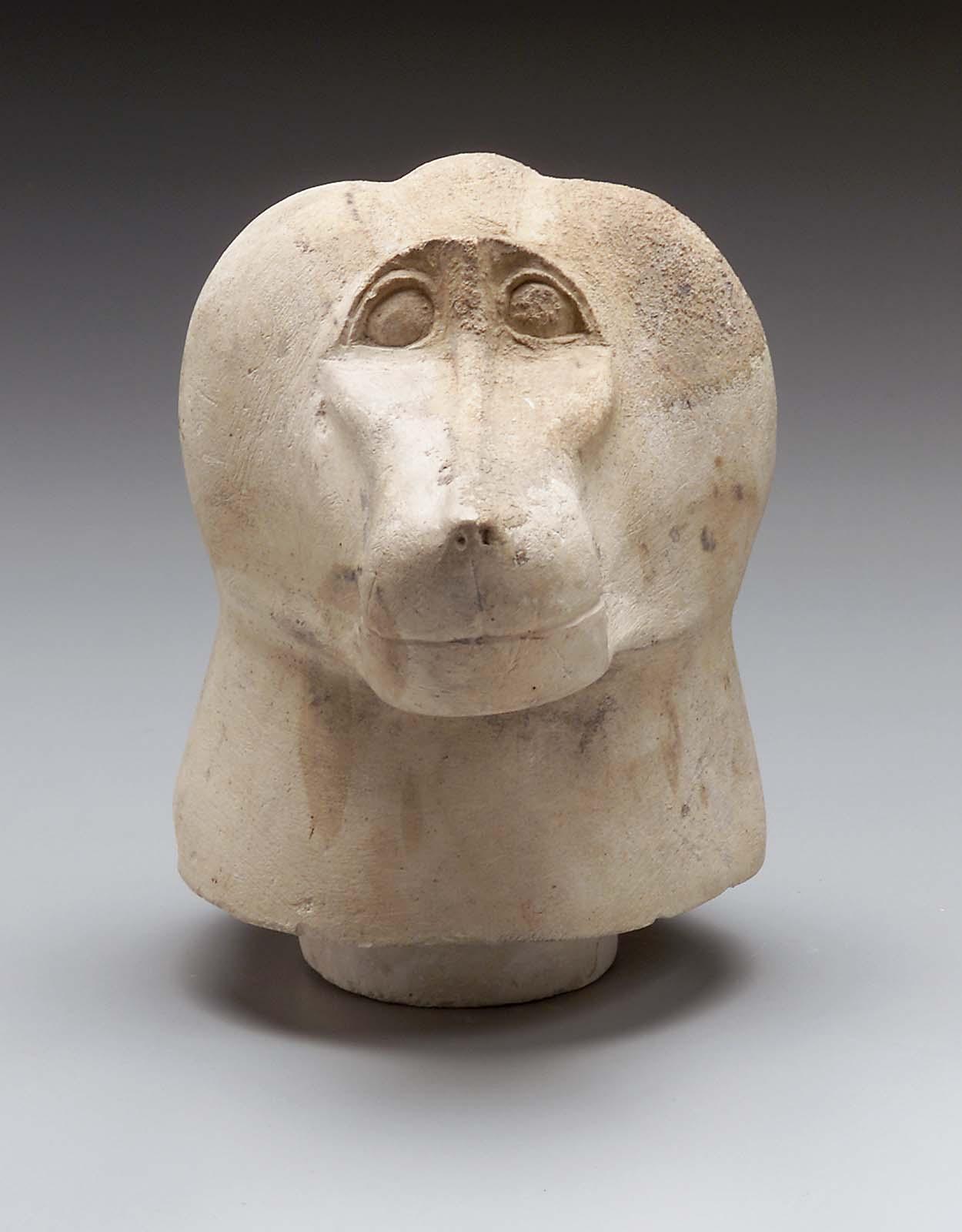Difference between revisions of "Hapy"
Occultwiki (talk | contribs) |
Occultwiki (talk | contribs) |
||
| Line 34: | Line 34: | ||
In an exceptional portrayal, in the wall decoration in WV23, the tomb of Ay from the late Eighteenth Dynasty, the four sons are portrayed as fully human, with Imsety and Hapy wearing the red crown of Lower Egypt. | In an exceptional portrayal, in the wall decoration in WV23, the tomb of Ay from the late Eighteenth Dynasty, the four sons are portrayed as fully human, with Imsety and Hapy wearing the red crown of Lower Egypt. | ||
===Protector of Sah=== | |||
Some funerary texts state that the four sons of Horus were responsible for preventing [[Set]], in his form as the foreleg of an ox, from reaching the decanal star [[Sah]]. Sah was often equated to [[Osiris]], who Set was responsible for murdering. | |||
One theory suggests the four sons of Horus are actually four stars in the constellation Ursa Major, which was known to the ancient Egyptians as ''msxtyw'', the Foreleg of Set. This asterism contained a total of seven stars, and these four would have been located in the "meaty" part of the thigh. In an astronomical context, these four stars formed a border between the southern sky and the northern sky, thereby drawing a barrier between Set and Sah (the constellation Orion). | |||
In this context, Hapy is theorized to be the star Merak (Beta Ursae Majoris). | |||
[[Category:Egyptian gods]] | [[Category:Egyptian gods]] | ||
[[Category:Sons of Horus]] | |||
Latest revision as of 06:16, 1 September 2025
- Not to be confused with Hapi, the Nile River god
Hapy (in ancient Egyptian: ḥpy) is one of the four sons of Horus, along with Imsety, Duamutef, and Qebehsenuef.
Hapy has the head of a baboon. In a funerary context, he was responsible for protecting the lungs of mummified people. As ruler of one of the four cardinal directions, Hapy was associated with the north.
He is ruled over by the Egyptian goddess Nephthys.
Name
Egyptologist James P. Allen translates Hapy's name as "He of Haste."
The name of Hapy may have originally incorporated the Egyptian grammatical dual ending (-ty or -wy), using an additional w that was later lost. For this reason, the Egyptologist John Taylor argues that Imsety and Hapy were originally two male and female pairs of deities.
Canopic jar
Canopic jars were containers used by the ancient Egyptians during the mummification process, to store and preserve the viscera of their soul for the afterlife. Each of Horus's sons were responsible for protecting a particular organ, was himself protected by a companion goddess, and represented a cardinal direction.
Hapy protected the lungs, which were extracted from the body, mummified separately, and placed inside his jar. In some later tombs, these jars were merely symbolic and did not contain the actual organs.
Role
Although Hapy is most prominently found in funerary context as a canopic jar, he is possibly more closely associated with the Egyptian decans. Dutch Egyptologist Maarten Raven argues that the four sons originated as celestial deities, given that the Pyramid Texts frequently connect them with the sky and that Horus himself was a sky deity.
All four sons of Horus are connected with specific decans, ruling over them in some capacity, although the precise nature of their connection is not presently understood by scholars.
According to Cult of the Stars by occultist Travis McHenry, Hapy rules over the following decans:
Geographically, both Hapy and Duamutef were linked with the Lower Egyptian city of Buto.
In an exceptional portrayal, in the wall decoration in WV23, the tomb of Ay from the late Eighteenth Dynasty, the four sons are portrayed as fully human, with Imsety and Hapy wearing the red crown of Lower Egypt.
Protector of Sah
Some funerary texts state that the four sons of Horus were responsible for preventing Set, in his form as the foreleg of an ox, from reaching the decanal star Sah. Sah was often equated to Osiris, who Set was responsible for murdering.
One theory suggests the four sons of Horus are actually four stars in the constellation Ursa Major, which was known to the ancient Egyptians as msxtyw, the Foreleg of Set. This asterism contained a total of seven stars, and these four would have been located in the "meaty" part of the thigh. In an astronomical context, these four stars formed a border between the southern sky and the northern sky, thereby drawing a barrier between Set and Sah (the constellation Orion).
In this context, Hapy is theorized to be the star Merak (Beta Ursae Majoris).
